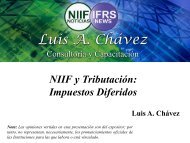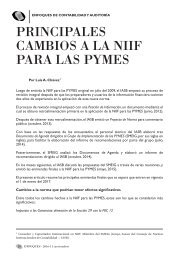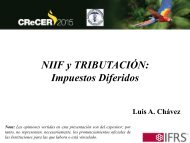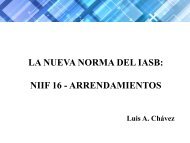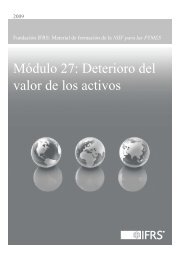You also want an ePaper? Increase the reach of your titles
YUMPU automatically turns print PDFs into web optimized ePapers that Google loves.
On 3 January 20X0, Open Safari obtains an £8,000,000 loan facility from a British bank.<br />
The loan is denominated in British pounds (£). The loan agreement obligates the bank to<br />
transfer £8,000,000 to Open Safari on 3 January 20X0 and Open Safari to transfer to the bank<br />
ten years later £13,031,157 on 2 January 20Y0 (in full and final settlement of the loan).<br />
Makeit guarantees all payments to the bank in the event that Open Safari defaults.<br />
Acquisition of land<br />
On 1 February 20X0, Open Safari purchases 1,000 hectares of undeveloped natural land<br />
called Freelands, an area of land in central Africania, for $10,000,000, 1 with the aim of<br />
establishing an ecotourism business. The property is not fenced and adjoins a national park<br />
on all its boundaries except the western boundary, where Freelands adjoins privately owned<br />
undeveloped land that is currently unused. A wide range of indigenous plants and wild<br />
animals (including significant numbers of buffalo, crocodile, giraffe, hippopotamus, leopard,<br />
lion, zebra and a wide variety of antelope) inhabit Freelands and the surrounding lands. Law<br />
in Africania specifies that wild animals are the property of the owner of the land that they<br />
occupy. Neither elephant nor rhinoceros frequent Freelands because both species are no<br />
longer present in Africania because of heavy poaching during the civil war that plagued the<br />
country approximately a decade ago.<br />
Design of infrastructure<br />
The Bilkersens are inspired by the potential of the property to attract international tourists<br />
because visitors would be able to view native animals at close range in their natural habitat.<br />
Consequently, in February 20X0, the couple contract a leading Italian architect to design a<br />
luxury safari lodge. The construction phase is expected to take about three years to complete.<br />
The managers plan for the buildings to blend in with their setting and to have minimal impact<br />
on the environment. They therefore prefer to use local materials and building techniques,<br />
including thatch-grass roofing harvested from Freelands, for the lodge and staff<br />
accommodation buildings.<br />
In April 20X0 the plans for the lodge are finalised. They include the construction of a<br />
reception area, restaurant, lounge, swimming pool and an office from which to administer the<br />
lodge and safari operations. The plans also include a home for the Bilkersens, twenty smaller<br />
free-standing homes for the staff and eighteen movable, luxury aluminium-framed canvas<br />
safari tents for guests.<br />
When complete, the main lodge building will comprise the external structure (expected<br />
economic life 60 years), ducted air-conditioning (30 years), grass roof (20 years), fixtures and<br />
fittings (15 years), hard furniture (15 years) and soft furnishings (5 years). However, to<br />
maintain the upmarket image of the lodge, management expect to replace the grass roof,<br />
fixtures and fittings, hard furniture and soft furnishings at intervals of 10, 5, 3 and 2 years<br />
respectively. Management do not intend to replace the external structure or the ducted air-<br />
1<br />
Dollar ($) is the currency of the United States of America.<br />
© IFRS Foundation. This material is intended as guidance only and the views expressed in it are those of the<br />
authors who do not provide any warranty as to the correctness of the content. Official positions of the IFRS<br />
Foundation and the IASB are determined only after extensive due process and deliberation. Page 4



